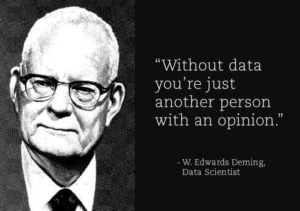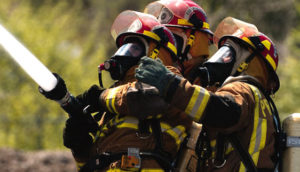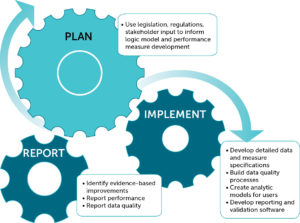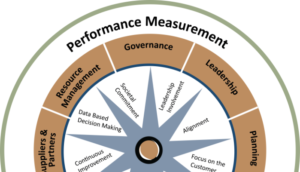By: Robert Avsec, Executive Fire Officer
 The subject of this piece was prompted by the question Dr. Burton Clark posed when he posted this picture on LinkedIn, “How do we define fire department success?”
The subject of this piece was prompted by the question Dr. Burton Clark posed when he posted this picture on LinkedIn, “How do we define fire department success?”
Good question, Dr. Clark! As another LinkedIn member commented on one of my posts, we in the fire service continue to play the “response time game”. We measure our performance using measures of efficiency (number of responders, number of apparatus, response time to the scene) rather than effectiveness, i.e., outcomes.
 Where output performance measures measure the number of apparatus dispatched to a fire, outcome performance measures look at how effective firefighters were after their arrival on the scene of the incident. If it takes 15 minutes to hook up to available water and the house burns down, the output measures are not affected since they only measure the resources dispatched. However, the outcome was a disaster. An example of an operational performance outcome measure is the number of fires kept to the room of origin after arrival of the fire department.
Where output performance measures measure the number of apparatus dispatched to a fire, outcome performance measures look at how effective firefighters were after their arrival on the scene of the incident. If it takes 15 minutes to hook up to available water and the house burns down, the output measures are not affected since they only measure the resources dispatched. However, the outcome was a disaster. An example of an operational performance outcome measure is the number of fires kept to the room of origin after arrival of the fire department.
What’s the most desirable fire protection system outcome for a community? Zero preventable fires, no? So how could we measure a fire department’s performance in reaching that goal?
Why should a department seek to objectively measure performance?
But, why measure performance? Robert Behn points out, “neither the act of measuring performance nor the resulting data accomplishes anything itself; only when someone uses these measures in some way do they accomplish something.”
He goes on to suggest that public managers have an ultimate purpose of using measures to  improve performance, and that purpose includes:
improve performance, and that purpose includes:
- Evaluation of how effectively resources are allocated and used;
- Control over how efficiently resources are allocated and used;
- Budgeting for the correct amount of resources;
- Motivation of the workforce by providing concrete goals and objectives to pursue and the feedback on how those efforts are doing;
- Promotion of goals and objectives for the organization that really “matter”;
- Celebration of successes in attaining published goals and objectives; and
- Learning from both the process of developing performance measures and the successes and failures associated with the pursuit of those performance measures.
What the published literature provides
I created several Internet searches using variations of the phrase, “fire department performance measures.” Surprisingly, my search of the Internet for pertinent literature revealed very little in the way of current published works in the realm of fire and EMS department performance measures.
Minnesota Legislature Review of Fire Department Performance (1999, PDF file, 182 pages)
In 1999, the Auditor’s Office of the Minnesota State Legislature published the results of a study of Minnesota fire departments serving communities of 8,000 or more residents to determine fire department best practices.
 The Legislature’s emphasis on identifying what local governments do well is one of the key distinctions between best practices reviews and traditional audits or program evaluations, which typically focus on compliance and performance deficiencies. The Legislature intended that best practices reviews help local governments improve their service delivery by learning about effective and efficient methods used by jurisdictions similar to them.
The Legislature’s emphasis on identifying what local governments do well is one of the key distinctions between best practices reviews and traditional audits or program evaluations, which typically focus on compliance and performance deficiencies. The Legislature intended that best practices reviews help local governments improve their service delivery by learning about effective and efficient methods used by jurisdictions similar to them.
The study results included a Fire Department Performance Checklist. Each item is accompanied by a comprehensive list of measures for each performance goal.
I encourage you to read the full report because I believe you’ll come to the same conclusion that I did. That is that, while the report is more than 17 years old, it is still a relevant and useful document that can form the foundation for a fire department’s performance measurement program.
Fire Service Performance Measures (2009, PDF file, 46 pages)
This report, written by Jennifer Ryan of the National Fire Protection Association’s Fire Analysis and Research Division, identifies and presents potential performance measures as they relate to the core functions of the fire department and discusses the information garnered from and the cautions associated with each measure.
This is another piece of work that has stood the test of time. Although some of the links to referenced documents used to create the report no longer are active, the white paper itself can provide any fire and EMS department with the “blueprint” to create a solid program of performance measurement.
Fire Department Performance Measures (2011, 4 pages)
The Fiscal Policy Studies Institute (FPSI) produces occasional informal papers on subjects  related to accountability in general and Results-Based Accountability TM (RBA) implementation in particular. This paper is in response to a request for ideas about performance measures for fire departments.
related to accountability in general and Results-Based Accountability TM (RBA) implementation in particular. This paper is in response to a request for ideas about performance measures for fire departments.
The right way to answer the question about performance measurement for fire departments is to get firefighters around a table. The 5 step process for identifying performance measures in 45 minutes (Appendix G of Mark Friedman’s book, Trying Hard Is Not Good Enough) could be used to structure the discussion. And this would almost certainly lead to a good working set of measures that could become the starting point for continuous improvement. The trick in this process is to winnow the long list of potential measures to those few which could be MOST useful in monitoring and improving performance. This analysis is intended as a resource for this kind of process.
Performance Measurement Systems (Word, 13 pages)
This paper, written by Dr. Charles Kime and published by East Stroudsburg University, discusses the importance of performance measurement in the fire service for a variety of reasons. Performance measures provide a means of defining program service levels both at the operational level and at the strategic level.
Whether measuring fire suppression, fire education, arson investigation, or any other fire service delivery program, performance measures can provide clarity of mission. Additionally, performance measurement systems provide a rational methodology to report program accomplishments to managers, customers, and policymakers.
 Fire & EMS Leader Pro The job of old firefighters is to teach young firefighters how to become old firefighters!
Fire & EMS Leader Pro The job of old firefighters is to teach young firefighters how to become old firefighters!